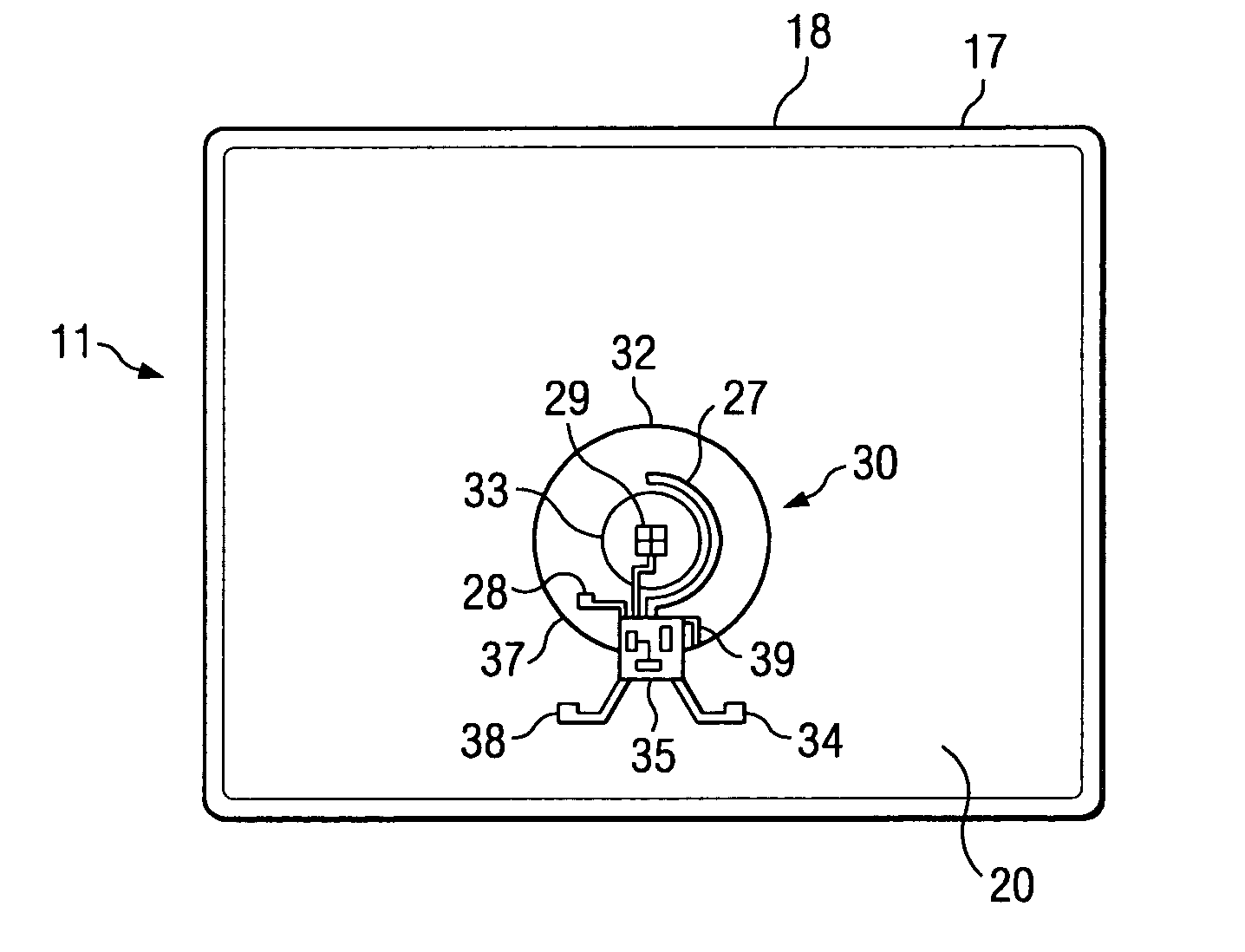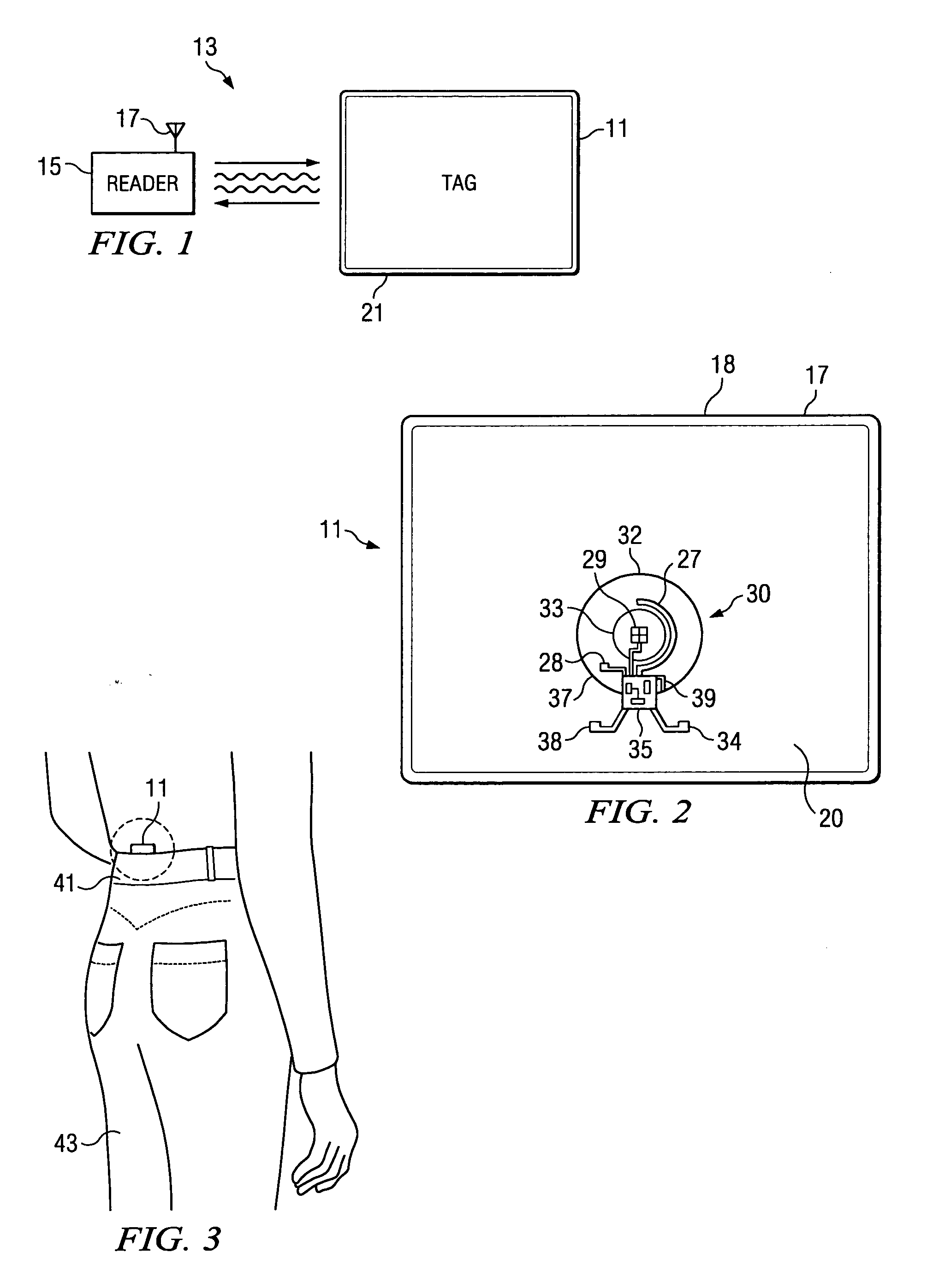Textile identification system with RFID tracking
- Summary
- Abstract
- Description
- Claims
- Application Information
AI Technical Summary
Benefits of technology
Problems solved by technology
Method used
Image
Examples
Embodiment Construction
[0021] The system of the invention uses wireless radio frequency identification devices (RFID's) to mark, track and identify such objects as garments, textiles and linens. RFID technology will first be described in general terms before turning to a specific end application of the invention. Whereas RFID's were, in the past, cost prohibitive, such devices can now be purchased commercially for on the order of 20 to 30 cents apiece, making them suitable for the purposes of the present invention. RFID tags are now well-known and typically include an integrated circuit (IC) that is operatively coupled to an antenna (the tag antenna). The tag may also have a battery, or it may have no battery and may instead obtain energy from an external reader. RFID tags without batteries may be preferred for applications in which lower cost is a dominant factor, and RFID tags with batteries may be preferred for applications in which a longer read range is preferred. Either or both may be used in conjun...
PUM
 Login to View More
Login to View More Abstract
Description
Claims
Application Information
 Login to View More
Login to View More - R&D
- Intellectual Property
- Life Sciences
- Materials
- Tech Scout
- Unparalleled Data Quality
- Higher Quality Content
- 60% Fewer Hallucinations
Browse by: Latest US Patents, China's latest patents, Technical Efficacy Thesaurus, Application Domain, Technology Topic, Popular Technical Reports.
© 2025 PatSnap. All rights reserved.Legal|Privacy policy|Modern Slavery Act Transparency Statement|Sitemap|About US| Contact US: help@patsnap.com


